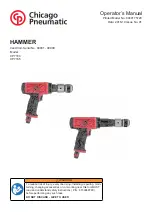
SCPI Messages
62
Series N6700 User’s Guide
Coupled Commands
When commands are coupled it means that the value sent by one
command is affected by the settings of another command. The
following commands are coupled:
[SOURce:]CURRent and [SOURce:]CURRent:RANGe.
[SOURce:]VOLTage and [SOURce:]VOLTage:RANGe.
If a range command is sent that places an output on a range with a
lower maximum setting than the present level, an error is generated.
This also occurs if a level is programmed with a value too large for
the present range.
These types of errors can be avoided by sending the both level and
range commands as a set, in the same SCPI message. For example,
CURRent 10,(@1);CURRent:RANGe 10,(@1)<NL>
will always be correct because the commands are not executed until
the message terminator is received. Because the range and setting
information is received as a set, no range/setting conflict occurs.
SCPI Messages
There are two types of SCPI messages, program and response.
A
program message
consists of one or more properly formatted
SCPI commands sent from the controller to the power system.
The message, which may be sent at any time, requests the power
system to perform some action.
A
response message
consists of data in a specific SCPI format
sent from the power system to the controller. The power system
sends the message only when commanded by a program message
"query."
The following figure illustrates the SCPI message structure.
Data
Keywords
Keyword Separator
Message Unit Separators
Message Unit
Query Indicator
Message Terminator
Root Specifier
VOLT : LEV 10, (@1) ; PROT ON, (@1) ; : CURR? (@1) <NL>
Channel
Space
















































